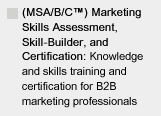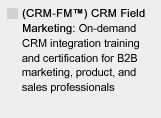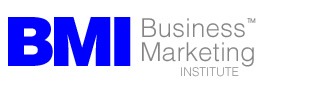MAKE SURE YOU CONTINUE TO RECEIVE EACH ISSUE OF TUESDAY MARKETING NOTES—CLICK HERE TO RENEW YOUR FREE SUBSCRIPTION (IF YOU'VE ALREADY SUBSCRIBED, NO NEED TO RE-SUBSCRIBE)

Two Keys to Every Call to Action
by Michele Linn, Linn Communications
One tenet of marketing is that content should have a call to action. Seems basic enough, but is this really common practice?
For a post I wrote for Savvy B2B Marketing, I looked at 40 white papers from Jonathan Kantor’s blog, The White Paper Pundit, to see how many had a call to action. As a point of reference, Jonathan provides a list of white papers each Friday, and he describes this somewhat random sampling of white papers as a list of white papers posted on Twitter that week that do not require registration.
So what did I find? Out of the 40 papers included in the list, only 12 included a call to action (and some of these weren’t very effective).
While this was a very unscientific look at just a sliver of one type of B2B content, I would make a wild guess that these results aren’t too uncommon. From my experience, it seems that the call to action is often an afterthought instead of an integral part of the strategy.
Is a call to action really important? Yes! Not only is it a good practice, but consider these two scenarios:
• If you are using a more sophisticated marketing automation system to track leads, you want to be able to see which readers raise their hand for more info from you so you know who to prioritize;
• If you do not require registration for your offer, you need to make you call to action very explicit so your reader knows what step to take because you won't be able to contact them to continue the conversation (becasue you won't know who they are)
What Makes a Good Call-to-Action?
The best calls to action target your specific audience as well as where they are in the buying cycle.
Targets a specific reader—I like the generic buying roles that Steve Woods outlines in his blog, Digital Body Language: Economic buyer/decision maker, technical evaluator, user buyer and influencer/coach.
It's imperative to understand which of these individuals your offer is targeting as your call to action will be different for each. Think about it:
• Economic buyers: This group needs to be able to justify the expense. Calls to action for this group may be things like viewing an ROI calculator or reading a case study of how someone saved money with your solution;
• Technical evaluators: This group aims to understand the technical feasibility of your solution. They want things like product specs and technical case studies;
• User buyer: This is the group that will be using the product, so they respond well to things such as demos and trials;
• Influencer/coach: These individuals are internal champions for your solution. They often forward your information, an implicit call to action should be for them to forward this white paper; make your white papers easy to share. Appropriate calls to action for this group will vary based on who they are trying to influence
Moves reader through the buying cycle: Ideally, your content is developed to educate your reader at a certain point in the buying cycle, and your call to action should be a way to move them along the path to purchase. TechTarget recently released their 2009 Media Consumption Report, the result of a survey of 1474 IT professionals (note: This report requires free registration). This study specifically looks at IT professionals, but I think there are good applications for all of B2B marketing.
As part of the report, they detail what content IT buyers prefer to receive at various stages of the buying cycle. As a summary, here are the various content items preferred during the buying process:
• Awareness: eBooks, email newsletters, editorial articles and white papers;
• Consideration: online videos, webcasts, podcasts and ebooks and virtual trade shows;
• Decision: trial software, online vendor demos, product literature and customer case studies
What if My Offer Isn’t Very Targeted? Should I Still Include a Call to Action?
Even if your content isn’t as sophisticated to be targeted to an audience and a point in the buying cycle, you should still include a call to action. As a point of reference, a recent study from InformationWeek found that most white paper readers (75.8%) go to a search engine to look for more information once finishing a white paper.
This statistic is specific to white papers, but it stands to reason that the majority of B2B prospects will use search engines to find more information. By including a call to action, you increase the chance your reader will look at information that will help them learn more about your company instead of having them go to Google and stumbling across your competition.
For instance, take a look at the last page of any Change This manifesto (if you aren’t familiar with this site, it’s definitely worth a look. It has white papers and reports on various topics; I usually discover new ways here to think about things). They have a template that every manifesto uses, and I think the last page of each is a good approach that can be effective. There is a call out to tell a reader where to learn more about the specific topic as well as links to their blog and newsletter. There is even a link so readers can easily pass along the doc. Although this “menu” approach isn’t as targeted, it still provides readers with some options on where to learn more.
The bottom line is this: With all of your marketing materials, give the reader an option to find out where they can learn more. Put yourself in your reader’s shoes and figure out what type of information they would like to see next.
Michele Linn (http://www.linncommunications.com/) is a freelance marketing writer specializing in white papers, research reports, feature articles, case studies, and other B2B communications. Her business is devoted to making the job of B2B marketers easier by producing buyer-focused content and providing insights on how they can market it. She is also a founding member and frequent contributor to the Savvy B2B Marketing blog (http://savvyb2bmarketing.com/blog). Send her an e-mail (michele@linncommunications.com) or follow her on Twitter (http://twitter.com/michelelinn)








